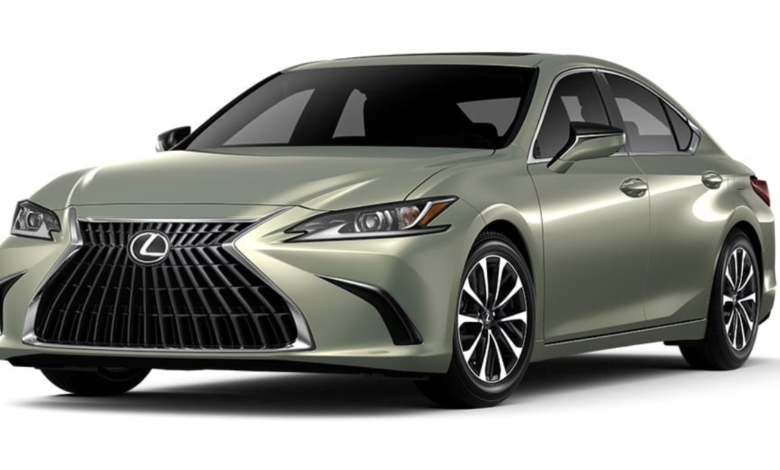
The seventh-generation Lexus ES offers a luxurious ride that is just as cosy as a well-loved blanket. Although the ES lacks impressive features and cutting-edge innovation, this is not negative. The standard ES ride ranges from the more affordable ES 250 to the more powerful ES 350 to the 300h hybrid, which is inevitably enjoyable. The current model debuted in 2019, and in 2022, it had a minor visual change that included new interior adjustments and improved fascia style.
This year, Lexus debuted the F Sport handling package in addition to the F Sport design package; the former is more performance-oriented and has a suspension optimized for sport, while the latter is sportier-looking but lacks the sharp edges of the former. The ES is a luxurious car with first-rate features that provides a surprisingly good value for the money. The ES 250 AWD and ES 350 FWD start at $42,490, while the ES 300h has a slightly higher price tag at $43,690.
The F Sport Design and F Sport Handling choices are among the trims, as are the Luxury and Ultra Luxury grades. When purchasing the ES 350, the new ES F Sport Handling version costs $48,950; when purchasing the ES 300h, it costs $49,985. The top-of-the-line ES 350h Ultra Luxury trim level costs $52,480 and features an 18-inch alloy noise-reduction wheel, a 12.3-inch touchscreen, and a head-up display. Three other driver-assist functions include a panoramic view monitor, rear pedestrian recognition, and parking assistance with automated braking. (A $1,150 destination charge is included in all pricing.)
Despite the increase of crossovers and SUVs in the sedan market, which has decreased recently, competition is still quite intense, and Lexus’ competitors aren’t taking any time off. With its stunning look and cutting-edge interior features, the Genesis G70 threatens the ES, while the BMW 330i is a steadfast favourite. The Cadillac CT5 hails from the heart of America and is built on an enticing heritage and exceptional performance.
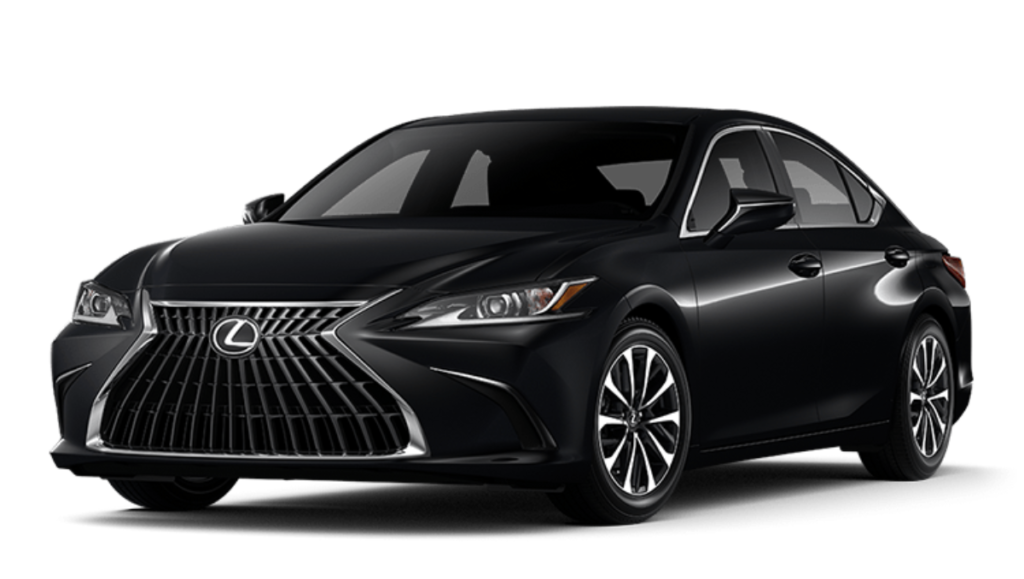
The ES offers a broad appeal for various preferences despite only being available as a four-door sedan. It all starts with a respectable 203-horsepower four-cylinder engine. The ES 250’s standard model doesn’t provide performance that will blow you away, but two more flavours make up for it. With a combined 215 horsepower from the engine and motor, the 350h offers remarkable fuel efficiency, while the 350 goes up to a solid 302 horsepower V6. Either way, the ES is content with 87-octane gasoline, giving it an edge over rival luxury sedans like the BMW 330i.
Practical, well-to-do buyers who value a smooth ride and extras like a 17-speaker Mark Levinson audio system, walnut inside trim, and an abundance of driver-assist systems are usually the target market for this sector. With the G70, Genesis is attempting to attract a younger demographic with its upscale features and edgier styling. At the same time, BMW’s 330i is a top choice for those looking for a sportier vehicle. Regarding cars looking for a low-key experience, Lexus is more appealing than the CT5, especially regarding the CT5-V trim, which is more of a blunt tool for power combined with a luxurious cabin.
The Lexus ES is comparable to the TLX and 330i because it is sold with a standard three-year, three6,000-mile basic, five-year, and 60,000-mile powertrain warranty. With its 5-year, 60,000-mile basic and 10-year, 100,000-mile powertrain coverage, Genesis goes above and beyond. A comprehensive suite of driver-assist technology that rivals anything else in the class is included as standard equipment. For those who like elegant sedans, the ES remains a great option and bargain even after over 40 years on the market.
Performance: Lexus ES
The ES has two distinct engine options: a conventional four-cylinder engine with 203 horsepower and 184 pound-feet of torque or a rapid and snappy V6 with 302 horsepower and 267 lb-ft of torque. Both machines can power the ES smoothly and silently. With the 300h hybrid option, the four-cylinder engine and a powerful electric motor combine to produce 215 horsepower. The standard handling of the ES prioritizes comfort above all other factors. Nevertheless, those who like winding roads could choose the F Sport handling option, which includes performance dampers and an adaptive suspension with additional tuning to regulate the chassis and absorb more vibration.
In contrast, the basic BMW 330i is equipped with a 48-volt mild hybrid system that produces an impressive 382 horsepower and 369 lb-ft of twist, or a thrilling four-cylinder turbocharged engine that produces 255 horsepower and 294 lb-ft of torque. Genesis starts the G70 with a 2.0-litre turbocharged four-cylinder engine that produces 252 horsepower. Cadillac’s CT5 begins with a 2.5-litre turbo four-cylinder engine that produces 237 horsepower and 258 lb-ft of torque and a 3.0-litre turbocharged V6 engine that produces 335 horsepower.
The hybrid powertrain, the ES lineup’s hidden weapon, is a proven electric motor/gas engine combo from Lexus even though it isn’t as powerful as the V6, the electric motor’s increased torque helps during takeoff and passing.
Fuel Efficiency: Lexus ES
From the ES 250 to the ES 350h, the ES provides a broad range of fuel economy, so hold onto your cash. For instance, according to EPA projections, the 2023 ES 250 is expected to get 28 mpg combined, 25 mpg in the city, and 34 mpg on the interstate. The V6-powered ES 350 gets 26 mpg combined, 22 mpg in the city, and 32 mpg on the interstate, with very little loss in fuel economy. (The F-Sport model loses one mpg on the highway and combined.) As predicted, the 300h is the efficiency champion; it gets 44 mpg on the interstate and connected and 43 mpg in the city.
The ES is in a better position than the G70, which only manages 20 mpg in the alternative turbo V6-powered AWD variant or 25 mpg with its inline-four motor. Cadillac’s CT5 is marginally less efficient than the ES, rated at 21 mpg with all-wheel drive with a V6 engine and a basic four-cylinder engine. And when using premium gasoline, the BMW 330i outperforms the ES, achieving 29 mpg overall or 27 mpg when using the all-wheel-drive xDrive option.
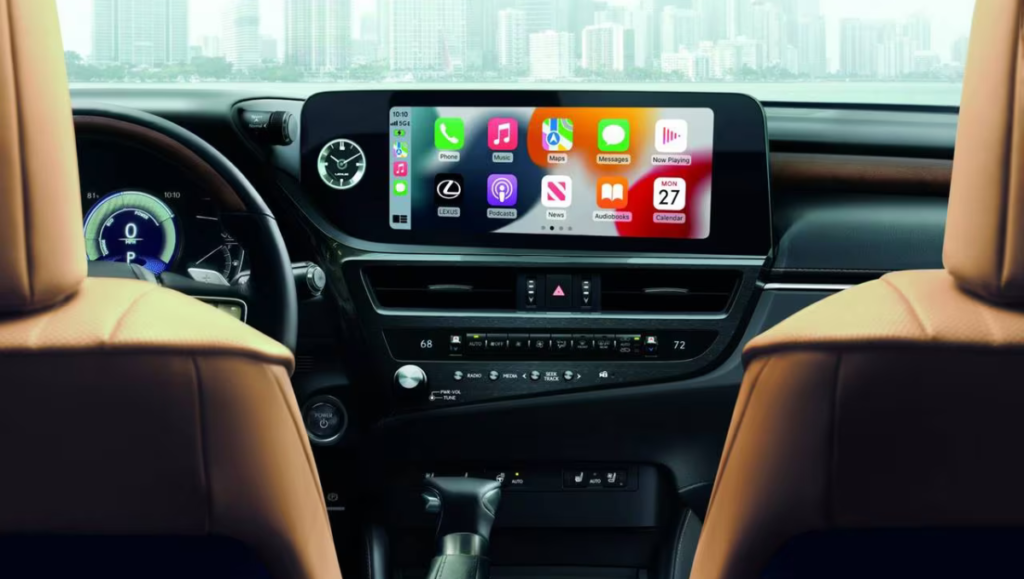
Driver assistance and safety:
The 2022 Lexus ES received the best grade from the Insurance Institute for Highway Safety (IIHS): Top Safety Pick+. Furthermore, it received a five-star rating from the National Highway Traffic Safety Administration (NHTSA).
Lexus doesn’t cut corners regarding driver-assistance technology; the ES comes with the Safety System+ 2.5 package as standard. It has automatic high beams, adaptive cruise control, front collision alert with pedestrian and cyclist recognition in low light, blind spot warning with rear cross-traffic alert, automatic high beams, and lane departure alert with lane-centring steering assistance.
Even with the cheapest model, Lexus offers about everything a buyer could ask for in a contemporary sedan regarding safety. For many purchasers, that’s a crucial consideration.
Coziness & Space:
Without a doubt, the ES offers a roomy and comfortable ride. The Japanese company updated its centre console for 2023, adding a space for a sunglass holder and relocating the cup holder and wireless charger for easier access. The location of the cup holder is welcomed as Americans continue to increase their consumption of hot and cold liquid drinks and begin to use more reusable water bottles.
You can spread out in an ES since the front row offers an impressive 42.4 inches of legroom and 37.5 inches of headroom, plus an additional inch when the sunroof is installed. The rear seat has 39.2 inches of legroom, which is significant in this market. This contrasts with the 330i, which has four inches less back legroom. Regretfully, the Genesis G70 has even less leg space in the back than the 330i.
The basic model’s soft imitation leather and the ES’s consistently well-organized console showcase the car’s interior excellence. Quilted and perforated semi-aniline leather is optional, although ten-way adjustable chairs are a standard feature. The front seats and steering wheel get additional heating and ventilation as part of the premium package.
Infotainment: Lexus ES
Good news! Lexus has finally removed the outdated touchpad interface that was giving American drivers grief. The upgraded infotainment system on the ES comes with an 8-inch touchscreen as standard equipment, wireless Apple CarPlay and Android Auto, cloud-based navigation, and a concierge help service available for an extra fee.
The Lexus arrangement is neat since it has an actual volume knob with an outside tuning ring that takes up little space and allows you to switch between channels without taking your eyes off the road. The ES prioritizes speech quality, which is evident in its user-friendly Hey Lexus voice control system, which is enhanced by two microphones and better noise cancellation.
The 12-inch touchscreen is a superior choice, standard on the Ultra Luxury variation and available on the Luxury grade and both F Sport trims. The astoundingly fantastic optional 17-speaker, 1,800-watt Mark Levinson audio system is no exception. Wireless Apple Car Play and Android Auto are also integrated with Bluetooth and USB. The infotainment system on the ES is the best it has ever been.

Storage & Cargo Space:
The roomy and broad trunk of the ES can accommodate up to 13.9 cubic feet of stuff, including groceries, sporting goods, luggage, and other items. The 330i wins the category with 17 cubic feet, or 13.2 in hybrid form; the G70 delivers just 10.7 cubes, while the CT5 gives 11.9.
However, since the rear seat is not foldable, the ES is less practical than the CT5, 330i, and G70. To provide room for things like field hockey sticks or to serve as a doorway into the trunk, Lexus did, however, install a pass-through from the middle of the back seats to the chest on the ES. A cargo net is also available, a clever addition to keep boxes, bags, and containers in their proper places.
The revised cupholder location makes more sense, and the little storage compartment is generously sized and well-built. The two cupholders in the rear seat console are practical and give the back passengers a little more luxury. There are two coat hooks to keep coats and clothes off the ground and wrinkle-free, and the front seatback pockets are handy for holding reading materials and little devices.
Design: Lexus ES
The ES seems to stay with the 2022 model’s streamlined body lines, LED headlights, and massive spindle grille from the exterior. The side mirrors have integrated turn signals for safety, and the front has arrow-like components that allude to motion and air. The ES has a pleasingly symmetrical rear end, and the quadrangle dual exhaust tips align with the design.
The serene, spa-like atmosphere of the ES’s interior design is its most remarkable feature. Lexus creates interiors that approach luxury with a comprehensive vision using premium materials and clever construction techniques. Get the premium option for the added benefit of wood and leather detailing inside and two-tone black 18-inch wheels to complement the outside for a little more money.
The stylists of the ES are staying true to their heritage, and that’s just OK with the Lexus fans. Fans of the G70 may not switch to the ES, but the ES’s reputation for dependability endures.
Is the Lexus ES 2023 a Good Buy?
The ES is offered in 2023 with the hybrid 300h and two conventional engine options: the ES 250 with an inline-four and the ES 350 with a V6. You may choose the F Sport package or the Luxury and Ultra Luxury trims from there. Furthermore, the standard ES can be upgraded with a high-end add-on package that comes with heated and ventilated seats, wood trim, power tilt-and-telescopic steering column, memory seats, power-folding side mirrors, rain-sensing windshield wipers with de-icing, and more.
The ES 250 is the only vehicle with all-wheel drive; front-wheel drive is the sole option for the other trim levels. Genesis provides all-wheel drive on the 2.0T and 3.3T versions of the G70, although rear-wheel drive is standard on the base model. Like the G70, the BMW 330i and Cadillac CT5 have all-wheel drive, which BMW refers to as xDrive.
We enjoy having all the niceties of the premium add-on package in addition to a fantastic Lexus hybrid engine with exceptional fuel economy in the $48,860 300h luxury grade. Like its rivals, the ES offers cosy seating for five people. Still, compared to newcomer Genesis, the Lexus has developed a refined, luxurious feel over the last forty years. Additionally, its combined fuel efficiency of 44 mpg is an impressive 16 mpg more significant than the next most efficient model, which is substantial enough to affect day-to-day driving.
Before choosing, consider the Lexus IS if you’re looking for sportier driving. Driving fans will love the Is’s superior handling and available horsepower on winding roads despite its modest size.
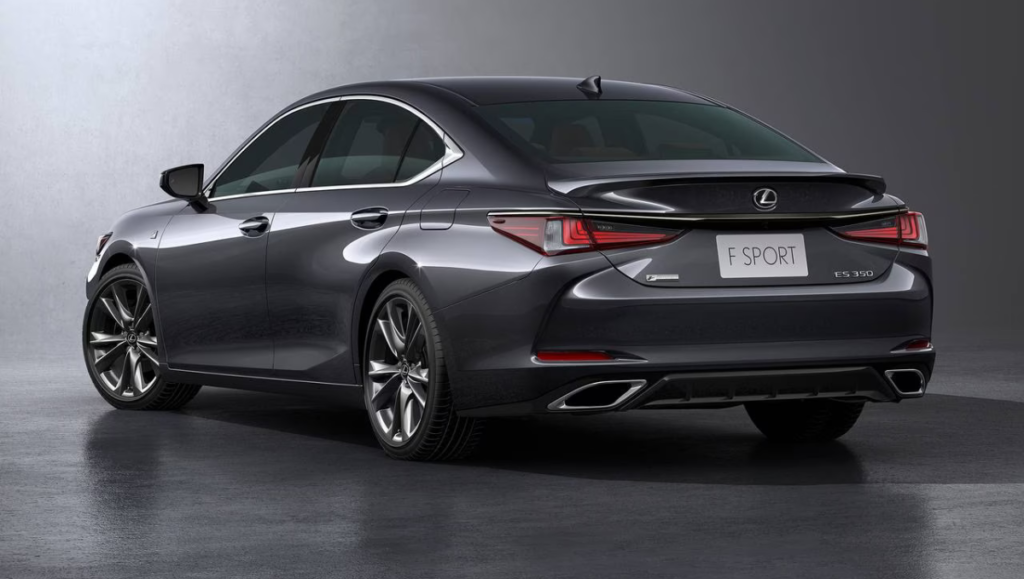
What is the Cost of Insurance for a 2023 Lexus ES?
Surprisingly, uniform insurance costs are found for the Lexus ES’s range of trim levels and engine combinations. On average, the standard Lexus ES 250 fees $2,552 per year for a 30-year-old female driver with a spotless record; the top-of-the-line ES 300 h Ultra Luxury costs, on average, $2831, but this figure applies to all 50 states. Owners of a Genesis G70 may spend $2,700 to $2,998 a year, compared to $2,529 to $2,832 for a Cadillac CT5 (the high-performance CT5-V variants are substantially pricier). The price of the BMW 330i is around $2,659.
Lexus ES Generations
Seventh Generation
2019-present
The 3.5-litre V6 engine that Lexus carried over was given a little more boost, going from 268 to 302 horsepower. In 2019, the ES debuted a new F-Sport variant on Toyota’s latest platform, and Lexus introduced Apple CarPlay after a lengthy wait (Android Auto wouldn’t arrive until 2020). The ES is challenging new and established rivals for the title in the premium midsize sedan market, where it remains a formidable force.
Sixth Generation
2013-2018
Lexus enjoyed extending the ES by around two inches with each new generation, and the sixth iteration was no exception. The ES 350 designation was reserved for the gas-powered variant, and the brand debuted a hybrid version for the first time, called the ES 300h. The 2012 model ES 350 retained its 268-horsepower 3.5-litre V6 engine mated to a 6-speed automatic gearbox, while the ES 300h’s 2.5-litre 4-cylinder engine teamed with an electric motor providing 200 horsepower. At Toyota’s Georgetown, Kentucky factory, a Lexus was manufactured in the United States for the first time.
Fifth Generation
2007-2012
The ES, which continues to be Lexus’ best-selling vehicle, debuted its fifth iteration with even more attitude. Standard equipment was for rain-sensing wipers, a driver-seat memory system, and Lexus’ Safety Connect suite—including emergency assistance, collision alerts, stolen vehicle tracking, and improved roadside support. 2011 saw the ES become a bit longer but also acquire a notable new feature: it was approved to operate on regular gasoline instead of premium, meaning it could now run on 87 octane.
Fourth Generation
2002-2006
The ES continued to expand, gaining 2.4 inches in height and two inches in wheelbase. Once again, Lexus offered a 3.0-liter V6 engine with 210 horsepower and a powerful 272-hp 3.5-liter alternative. Rain-sensing wipers and adaptive cruise control based on radar were included as optional options, along with leather upholstery and upscale Mark Levinson audio that raised the bar for sound quality.
Third Generation
1997-2001
For the 1997 model year, Lexus introduced the third-generation ES, redesigned with softer, curvier edges. The manufacturer increased the wheelbase by two inches and increased the horsepower of the 3.0-litre engine to 200. More prominent headlamps and a more expressive front were added to the ES as it transitioned from its comfort-luxury position after Lexus introduced the new, sportier IS. The 2004 model year ES 300 debuted with a 3.3-liter engine. During this time, things that are now common were introduced, such as a three-point harness for the middle passenger seat in the back and kid car seat anchors.
Second Generation
1992-1996
With five more inches of length and greater power, the second generation of the ES was still an upmarket Camry. In 1994, Lexus discontinued the manual gearbox and introduced the 3.0-liter V6-powered ES 300 version, which produces 185 horsepower. By the end of this generation, Lexus’s best-selling car was the ES.
First Generation
1990-1991
The original ES 250 had a 2.5-liter V6 engine that produced 156 horsepower. It was offered with a four-speed automatic or a five-speed manual gearbox. Regretfully, the base Lexus sedan also had a striking amount of similarities with its less costly Toyota equivalent, which did not appeal to early adopters but did pave the way for the ES’s success in the future.
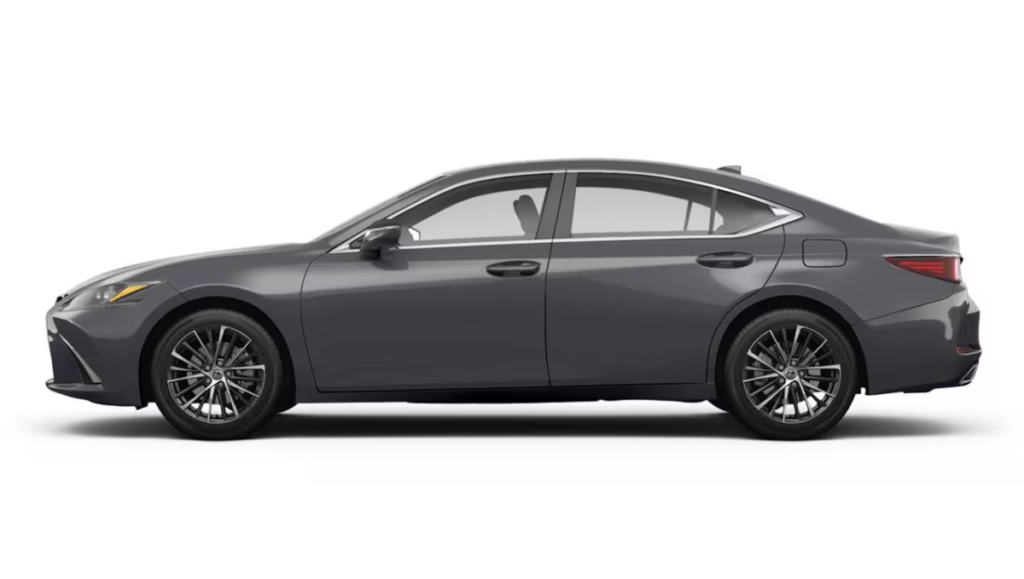
Verdict
The market has become used to the luxurious, pleasant ride the Lexus ES offers its passengers as its top-tier mid-level sedan. Although it may not provide the thrills of a sports sedan, this four-door luxury vehicle performs well overall, offering competitive fuel economy, a quiet interior, and predictable handling, especially regarding the 300h hybrid variant.




